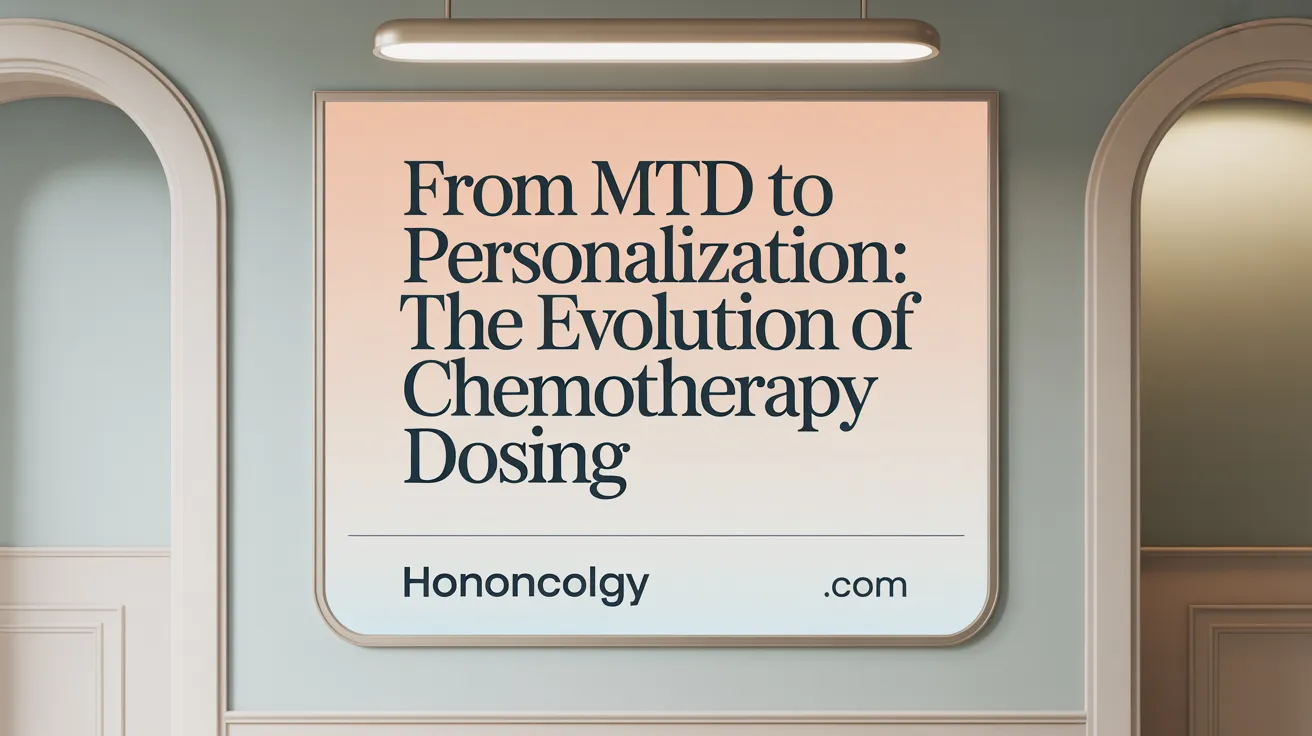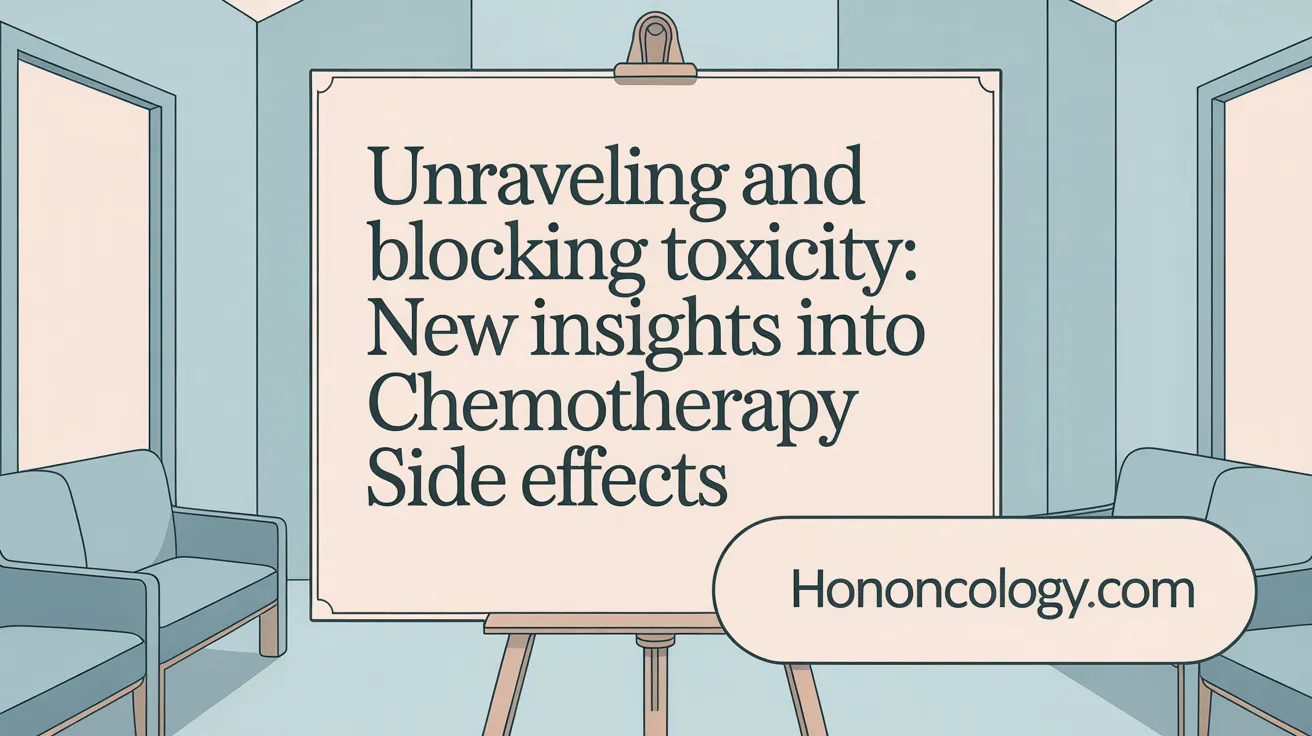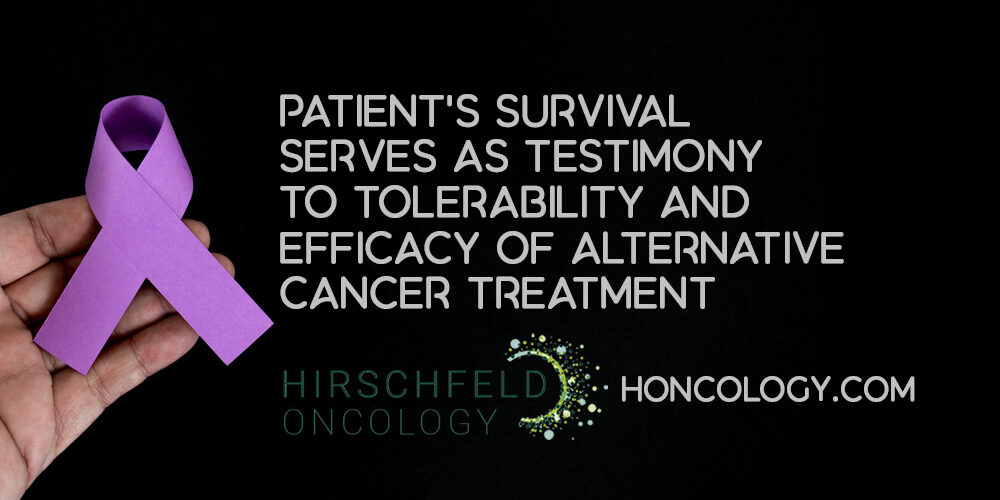Introduction to Low-Dose Multi-Drug Chemotherapy
Definition and rationale behind low-dose multi-drug chemotherapy
Low-dose multi-drug chemotherapy involves administering smaller doses of multiple chemotherapeutic agents, often more frequently than traditional high-dose regimens. This approach aims to balance effective cancer cell killing with reduced harm to healthy tissue, minimizing side effects commonly associated with standard chemotherapy.
Goals of reducing toxicity while maintaining efficacy
The primary goal of low-dose multi-drug chemotherapy is to maintain treatment efficacy while significantly lowering toxicity profiles. This method helps protect patients from severe adverse events such as neutropenia, neuropathy, diarrhea, and fatigue, thereby improving quality of life and allowing longer, more tolerable treatment durations.
Overview of evolving cancer treatment paradigms emphasizing personalized and integrative care
Modern cancer treatment is moving towards personalized, integrative approaches that tailor therapy based on individual patient factors like age, performance status, genetic makeup, and comorbidities. This paradigm shift highlights low-dose multi-drug protocols as part of a broader strategy to optimize efficacy and minimize toxicity, often in combination with targeted therapies, immunotherapy, and supportive care measures for enhanced patient empowerment and better outcomes.
Historical Context and Evolution of Chemotherapy Dosing

What has been the traditional approach to chemotherapy dosing?
For many years, the cornerstone of chemotherapy dosing has been the maximum tolerated dose (MTD) paradigm. This approach aimed to administer the highest dose of chemotherapy drugs that patients could endure without experiencing intolerable side effects. The rationale was to maximize cancer cell killing and tumor control. However, this often resulted in significant toxicity affecting healthy tissues and a decline in patients' quality of life (Chemotherapy toxicity and prevention, Lowering cancer drug doses).
Why is there a need to rethink traditional chemotherapy dosing?
The landscape of cancer treatment has dramatically evolved with the introduction of targeted therapies and immunotherapies. Unlike traditional cytotoxic chemotherapy, these modern agents often exhibit efficacy at doses below the MTD. Evidence now shows that high chemotherapy doses can cause unnecessary severe toxicities without improving treatment effectiveness (Totality of the Evidence in Dose Optimization, Balancing chemotherapy efficacy and toxicity).
Due to these findings, there is a growing recognition of the importance of dose optimization—finding the effective dose that balances treatment benefit with manageable toxicity. This shift is reflected in regulatory initiatives such as the FDA’s Project Optimus, launched in 2021, which encourages drug developers to evaluate a range of doses during clinical trials rather than focusing solely on MTD. The initiative aims to reduce overtreatment-induced side effects and improve patients’ quality of life by promoting safer, effective dosing strategies (Dose optimization in cancer drug development).
This paradigm shift underscores the need to personalize chemotherapy dosing, considering individual patient factors and therapy types to achieve the best outcomes with fewer adverse effects (Precision medicine in oncology, Geriatric assessment to balance chemotherapy efficacy and toxicity).
Principles and Benefits of Low-Dose Chemotherapy
What characterizes low-dose chemotherapy regimens?
Low-dose chemotherapy, also known as metronomic chemotherapy, is defined by the administration of smaller doses of chemotherapeutic drugs at more frequent or continuous intervals compared to traditional high-dose regimens. Unlike standard chemotherapy that relies on the maximum tolerated dose (MTD) with rest periods, low-dose protocols deliver treatment weekly or biweekly with minimal breaks.
How do low-dose regimens differ in frequency and dosage from traditional chemotherapy?
Traditional chemotherapy usually involves higher doses spaced with longer recovery times to allow healthy tissues to recover from toxicity. Low-dose regimens invert this by using reduced doses but administering them more often. This approach minimizes peak toxicity and offers more consistent exposure to cancer cells, potentially improving control over tumor growth (Low-dose chemotherapy overview, Low-dose metronomic chemotherapy).
What are the benefits of low-dose chemotherapy?
- Reduced Side Effects: Lower drug doses cause milder adverse effects such as less fatigue, nausea, neuropathy, and bone marrow suppression, enhancing patient comfort and safety (Chemotherapy toxicity and prevention).
- Improved Tolerability: This strategy is particularly beneficial for elderly, frail, or comorbid patients who struggle with intense chemotherapy toxicity (Geriatric assessment to balance chemotherapy efficacy and toxicity.
- Sustained Cancer Control: Continuous dosing can maintain pressure on tumor cells and reduce the chance of resistant clones developing (Metronomic chemotherapy (MCT).
- Immunomodulation: Low-dose chemotherapy can stimulate the immune system by reducing regulatory T cells and promoting cytotoxic T cell activity, thereby supporting anti-tumor immune responses (Low-dose chemotherapy regimen).
This combination of efficacy with reduced toxicity makes low-dose chemotherapy a promising alternative to traditional high-dose regimens, offering a favorable balance between cancer control and quality of life (Balancing chemotherapy efficacy and toxicity.
Multi-Drug Combination Approaches: Synergy and Toxicity Management
Why combine multiple drugs at low doses in chemotherapy?
Combining multiple chemotherapeutic drugs at low doses is a strategic approach to cancer treatment that targets various cancer pathways simultaneously. This method leverages synergistic or additive effects to enhance overall efficacy. A primary rationale is to improve treatment outcomes by attacking cancer cells via different mechanisms, reducing the likelihood of drug resistance developing (Combination Chemotherapy of Multidrug-resistant Early-Stage Cancer, Balancing chemotherapy efficacy and toxicity).
Mechanisms of overcoming resistance and toxicity reduction
Using multi-drug combinations helps overcome resistance by targeting cancer cells through distinct pathways. For example, one drug may induce apoptosis while another inhibits angiogenesis or disrupts tumor metabolism. This multifaceted assault limits cancer cells' ability to adapt or survive (Combination therapy in cancer). Additionally, because each drug is administered at a lower dose than when used alone, the combined approach tends to reduce the toxicity associated with high doses of individual agents, improving patient tolerance and quality of life (Low Dose Chemotherapy Benefits, Lowering cancer drug doses, Chemotherapy toxicity and prevention.
Examples in colorectal and other cancers
In colorectal cancer, combinations such as 5-fluorouracil (5-FU) with oxaliplatin and irinotecan (FOLFOX and FOLFIRI regimens) are commonly used, capitalizing on their complementary actions (Advances in colorectal cancer treatment, Balancing chemotherapy efficacy and toxicity. Computational modeling has optimized combinations like 5-FU with sulindac to effectively eliminate drug-resistant colon cancer cells while preserving normal tissue function with manageable toxicity (Combination Chemotherapy of Multidrug-Resistant Colon Cancer).
Beyond colorectal cancers, low-dose combination chemotherapy paired with immunotherapy has shown promising results in lung squamous cell carcinoma, achieving high response rates with reduced severe adverse events (Reduced-dose chemotherapy plus immunotherapy efficacy, neoadjuvant chemo-immunotherapy for NSCLC, Chemotherapy and immune checkpoint inhibitors combination). Such protocols support treatment personalization, especially for elderly or frail patients (Low-dose chemotherapy approach, Geriatric assessment to balance chemotherapy efficacy and toxicity.
This integrated approach, combining low doses and multiple agents, offers enhanced cancer control with a better-balanced toxicity profile, representing a sophisticated evolution in chemotherapy strategy (Low-dose chemotherapy overview, Balancing chemotherapy efficacy and toxicity.
Computational Modeling to Optimize Low-Dose Multi-Drug Chemotherapy
How can computational models aid chemotherapy dosing?
Computational models, particularly agent-based models, provide powerful tools to simulate the complex dynamics of both tumor cells and normal tissue during chemotherapy. By integrating data from human biopsy specimens, these models mimic how cancer and healthy cells respond to various drug doses and schedules.
Using high-performance computing, researchers can evaluate hundreds of thousands of potential dosing regimens virtually. This enables the identification of intermittent low-dose chemotherapy schedules that effectively eradicate cancer cells while sparing healthy tissue to maintain organ function. These approaches are in line with recent advances in dose optimization in cancer drug development and the paradigm shift towards balancing efficacy and toxicity in chemotherapy.
Use of agent-based models to simulate tumor and normal tissue dynamics
Agent-based models simulate individual cells' behaviors and interactions within a tissue, offering detailed insight into treatment outcomes. They capture how fast-growing cancer cells proliferate and survive drug exposure, as well as how normal cells recover during drug-free intervals.
Such modeling helps predict the balance between maximizing tumor cell kill and minimizing toxicity to normal cells, essential for optimizing chemotherapy. This methodology complements the use of computational modeling in chemotherapy optimization and supports integrative treatment planning.
Identification of optimal intermittent dose schedules balancing cure rates and toxicity
Modeling studies reveal that intermittent (staggered) low-dose schedules—rather than continuous high doses—can cure resistant cancers while reducing side effects. These schedules allow tissue recovery periods, limiting damage to healthy cells.
This approach strategically uses timing to maintain efficacy but avoids the cumulative toxicity common with standard regimens. Such concepts resonate with principles of low-dose chemotherapy combined with immune checkpoint inhibitors and metronomic chemotherapy to reduce toxicity.
Examples in colon cancer with 5-FU and sulindac
A notable example involves combining 5-fluorouracil (5-FU), a cytotoxic agent, with sulindac, which induces cancer cell apoptosis. Computational simulations identified a practical intermittent dosing schedule: 5-FU given as a 4-hour dose weekly, and sulindac biweekly. This combination eradicated multidrug-resistant colon cancer cells in 22 days, preserving normal colon tissue function.
This computational methodology supports designing clinically feasible, low-toxicity chemotherapy regimens tailored to resistant cancers, improving outcomes and quality of life. Such modeling aligns with broader strategies to balance efficacy and toxicity in chemotherapy and optimize combination chemotherapy regimens.
Low-Dose Chemotherapy Combined with Immunotherapy: Enhancing Efficacy and Safety

What are the benefits of combining low-dose chemotherapy with immunotherapy?
Combining low-dose chemotherapy with immune checkpoint inhibitors (ICIs) offers significant therapeutic advantages. This approach maintains high objective response rates (ORR) while substantially reducing the incidence of severe (grade 3/4) toxicities commonly observed with traditional full-dose chemotherapy. Lowering chemotherapy doses helps in better tolerability, especially for elderly or frail patients, without compromising anti-tumor efficacy (Reduced-dose chemotherapy plus immunotherapy efficacy, low-dose chemotherapy approach, Lowering cancer drug doses.
What evidence supports this combined approach in cancers like NSCLC and lung squamous cell carcinoma?
Clinical studies have shown that in advanced non-small cell lung cancer (NSCLC) and lung squamous cell carcinoma (LUSC), reduced-dose chemotherapy plus immunotherapy achieves comparable ORR and disease control rates (DCR) to standard full-dose regimens. For example, real-world data reveal ORRs around 85% and median progression-free survival (PFS) times around 12 months, mirroring outcomes from randomized controlled trials with standard doses (Reduced-dose chemotherapy and immunotherapy outcomes, neoadjuvant chemo-immunotherapy for NSCLC).
How does low-dose chemotherapy enhance the immune response mechanistically?
Low-dose chemotherapy can remodel the tumor immune microenvironment by promoting tumor antigen exposure, which facilitates T cell recognition. Studies indicate this regimen does not inhibit T-cell proliferation; instead, it induces expansion and increased diversity of dominant T-cell receptor (TCR) clones. Consequently, it enhances infiltration of cytotoxic CD8+ T cells into tumors, boosting anti-tumor immunity (Tumor immune microenvironment remodeling by reduced-dose chemo, Immune checkpoint inhibitors (ICIs)).
What are the clinical outcomes and toxicity profiles of this combined treatment?
Patients receiving low-dose chemotherapy plus ICIs demonstrate encouraging clinical responses with markedly fewer severe side effects compared to full-dose approaches. Grade 3/4 toxicities such as thrombocytopenia, peripheral neuropathy, gastrointestinal reactions, and fatigue are significantly reduced. This improved safety profile supports the feasibility of prolonged treatment and better quality of life without loss of efficacy (Toxicity comparison full-dose vs reduced-dose chemo, Management guidelines for chemoimmunotherapy toxicities.
Overall, integrating low-dose chemotherapy with immunotherapy harnesses synergistic effects – enabling effective tumor control while minimizing toxicity, thus expanding treatment options for vulnerable patient populations (Reduced-dose chemotherapy and immunotherapy outcomes, Emerging cancer treatment modalities).
Clinical Evidence Supporting Low-Dose Regimens in Various Cancers
Phase 3 Trials of Low-Dose and Metronomic Chemotherapy
Several phase 3 clinical trials have evaluated low-dose and metronomic chemotherapy regimens compared with standard dosing across different cancers. For example, in breast cancer, the S0221 trial explored frequent, lower doses of Adriamycin and cyclophosphamide, aiming to balance efficacy and toxicity (phase 3 breast cancer chemotherapy trial). Pediatric solid tumors have also been studied, notably with oral metronomic chemotherapy regimens alternating agents like thalidomide, celecoxib, etoposide, and cyclophosphamide, showing improvements in progression-free survival (PFS) and quality of life (low-dose metronomic chemotherapy). In colorectal and lung cancers, emerging studies indicate that reduced-dose chemotherapy combined with immunotherapy preserves clinical effectiveness while lowering toxicity (reduced-dose chemotherapy plus immunotherapy efficacy).
Real-World Evidence Shows Similar Efficacy and Improved Tolerability
Real-world data complement clinical trials by confirming that low-dose chemotherapy can maintain treatment efficacy. For instance, reduced-dose chemotherapy plus immunotherapy in lung squamous cell carcinoma demonstrated objective response rates around 85%, median PFS near 12 months, and overall survival (OS) of 15 to 16 months, comparable to full-dose regimens reported in randomized controlled trials (RCTs). These low-dose approaches also yielded significantly fewer grade 3–4 adverse events such as thrombocytopenia and peripheral neuropathy, enhancing patient tolerability (toxicity comparison full-dose vs reduced-dose chemo.
Benefits for Specific Patient Populations
Low-dose chemotherapy offers particular advantages for elderly, frail patients, and those with poor performance status who are often susceptible to severe toxicities with conventional dosing. Studies suggest these groups experience fewer side effects and similar survival outcomes with reduced-dose regimens, increasing their treatment accessibility and quality of life (balancing efficacy and toxicity in colorectal cancer chemotherapy; geriatric assessment to balance chemotherapy efficacy and toxicity.
Impact on Survival and Quality of Life
Across cancer types, low-dose and metronomic chemotherapy strategies have not only maintained comparable PFS and OS to standard-dose therapies but have also mitigated treatment-related toxicities. This reduction in adverse effects supports sustained adherence, improved quality of life, and can allow longer treatment durations or combination with immunotherapies. Overall, these findings underscore the clinical value of dose optimization approaches that balance effectiveness and safety (chemotherapy toxicity and prevention; dose optimization in cancer drug development.
| Cancer Type | Study Type | Low-Dose Regimen Details | Outcomes Observed | Patient Benefit |
|---|---|---|---|---|
| Breast | Phase 3 (S0221) | Frequent lower doses of Adriamycin + cyclophosphamide | Similar efficacy, reduced toxicity | Better tolerance, improved QoL |
| Pediatric Solid | Phase 3 | Metronomic oral chemotherapy with multiple agents | Improved PFS, QoL | Suitable for refractory tumors |
| Lung (LUSC) | Real-world, RCT data | Reduced-dose chemotherapy + immunotherapy | ORR ~85%, PFS ~12 mo, OS 15-16 mo | Less severe toxicities |
| Colorectal | Clinical studies | Reduced chemotherapy doses and staged strategies | Comparable survival | Reduced neuropathy, better tolerability |
This evidence supports considering low-dose chemotherapy as a viable option in personalized cancer treatment, particularly where toxicity reduction is essential without sacrificing efficacy (balancing chemotherapy efficacy and toxicity; lowering cancer drug doses.
Toxicity Profiles and Management in Low-Dose Multi-Drug Chemotherapy

What toxicities are reduced with low-dose chemotherapy?
Low-dose chemotherapy regimens have been shown to mitigate many common and severe toxicities associated with standard chemotherapy doses. These include reductions in neutropenia, peripheral neuropathy, diarrhea, mucositis, and hand–foot syndrome. For example, patients frequently report less severe neuropathic symptoms and fatigue, which are often a limiting factor in high-dose chemotherapy. The decreased intensity of side effects helps improve overall patient tolerability and quality of life (Low-dose chemotherapy overview, Low Dose Chemotherapy Benefits).
How is toxicity managed during low-dose chemotherapy?
Management of toxicity during low-dose chemotherapy involves close clinical monitoring to promptly detect adverse events. Regular laboratory tests and patient assessments facilitate timely dose adjustments to balance efficacy with safety. Integrative supportive therapies complement this approach; botanical supplements, nutritional intravenous therapy, hyperthermia, and oxygen therapies are often used to help reduce chemotherapy-related side effects. These supportive measures enhance patient comfort, decrease symptom burden, and enable longer treatment durations (Low-dose chemotherapy overview.
The patient-centric management of low-dose multi-drug regimens emphasizes personalized dose modifications along with supportive care to minimize toxicities without compromising therapeutic outcomes. Continuous assessment ensures that any emergent toxicities are promptly addressed, allowing patients to maintain treatment adherence and receive sustained benefit from the therapy (Geriatric assessment to balance chemotherapy efficacy and toxicity, Lowering cancer drug doses.
Balancing Efficacy and Toxicity in Colorectal Cancer Chemotherapy
How is chemotherapy tailored in colorectal cancer to balance efficacy and toxicity?
In colorectal cancer, combining chemotherapy agents like 5-fluorouracil (5-FU), irinotecan, and oxaliplatin has significantly improved treatment outcomes, including increased survival rates. Regimens such as FOLFOX (oxaliplatin with infusional 5-FU and leucovorin) and FOLFIRI (irinotecan with 5-FU/leucovorin) are widely used. However, these combinations come with toxicity concerns, especially oxaliplatin-related peripheral neuropathy, which can affect patients' quality of life.
To reduce toxicity, clinicians prefer infusional 5-FU over bolus 5-FU since infusional delivery is linked to fewer severe side effects and better efficacy. Additionally, oral fluoropyrimidines like capecitabine offer a less toxic and equally effective alternative to intravenous 5-FU, enhancing patient convenience and tolerability.
What strategies reduce initial toxicity in colorectal cancer treatment?
Sequential or staged treatment strategies initiate therapy with single-agent chemotherapy and escalate to combination regimens as needed. This approach maintains similar overall survival compared to starting with combination therapy but lowers initial toxicity.
Treatment breaks and intermittent chemotherapy schedules are also employed to mitigate cumulative toxicities without compromising effectiveness. These breaks can be particularly beneficial for patients with reduced performance status or comorbidities.
Individualizing chemotherapy decisions based on patient age, overall health, and treatment goals ensures an optimal balance between maximizing efficacy and minimizing harmful side effects.
| Topic | Details | Impact on Treatment Balance |
|---|---|---|
| Combination Regimens | FOLFOX, FOLFIRI combining 5-FU, irinotecan, oxaliplatin | Improved survival but requires toxicity management |
| Oxaliplatin Toxicity | Causes peripheral neuropathy, affecting long-term quality of life | Limits duration of oxaliplatin use; requires monitoring |
| Infusional vs Bolus 5-FU | Infusional 5-FU less toxic and more effective than bolus | Preferred dosing method for better tolerability |
| Oral Fluoropyrimidines | Capecitabine as effective, less toxic alternative to infusion | Offers convenience and reduced side effects |
| Sequential & Staged Treatments | Start with monotherapy, escalate upon progression | Reduces early toxicity while maintaining survival |
| Treatment Breaks | Planned interruptions in chemotherapy to limit cumulative side effects | Maintains efficacy, improves patient quality of life |
Targeted Agents and Their Role in Multidrug Regimens with Low-Dose Chemotherapy
How do targeted therapies fit into low-dose multi-drug chemotherapy?
Targeted therapies such as epidermal growth factor receptor (EGFR) inhibitors and anti-vascular endothelial growth factor (VEGF) agents play a crucial role when combined with chemotherapy, including low-dose multi-drug regimens. These agents work by specifically targeting tumor growth pathways, improving treatment effectiveness while sparing normal tissues compared to traditional chemotherapy (Emerging cancer treatment modalities, Balancing efficacy and toxicity in colorectal cancer chemotherapy, Low-dose chemotherapy overview.
Integration of targeted therapies in chemotherapy regimens
EGFR inhibitors like cetuximab and panitumumab show benefit predominantly in patients with wild-type KRAS tumors, as mutations in KRAS can render these drugs ineffective. Anti-VEGF therapy, with bevacizumab as a common example, complements chemotherapy by inhibiting tumor angiogenesis, thereby starving tumors of blood supply (Combination therapy in cancer, Balancing efficacy and toxicity in colorectal cancer chemotherapy).
Patient selection based on biomarkers
Biomarker-guided therapy personalization is critical. KRAS mutation testing directs the use of EGFR inhibitors to those most likely to respond. This targeting ensures maximum benefit while avoiding unnecessary toxicity in patients unlikely to gain from these agents (Precision medicine in oncology, Balancing efficacy and toxicity in colorectal cancer chemotherapy.
Toxicity considerations unique to targeted agents
Though targeted therapies tend to have more favorable toxicity profiles than conventional chemotherapy, they present unique side effects. EGFR inhibitors can cause skin rash and infusion reactions, while bevacizumab is associated with hypertension, bleeding, and thromboembolic events. Careful toxicity monitoring and management are essential, especially when combined with chemotherapy, even at low doses (Cumulative Toxicity in Targeted Therapies, Balancing efficacy and toxicity in colorectal cancer chemotherapy, Antibody-drug conjugates (ADCs) in NSCLC).
Benefits in resectability and survival
Targeted agents in combination with chemotherapy have improved outcomes in metastatic cancers, including increased tumor shrinkage, allowing previously unresectable tumors to be surgically removed. This can lead to prolonged survival and improved quality of life (Advances in colorectal cancer treatment, Balancing efficacy and toxicity in colorectal cancer chemotherapy, Combination therapy in cancer.
Integrating targeted therapies with low-dose chemotherapy regimens offers a promising balance between efficacy and tolerability, maximizing treatment benefits for appropriately selected patients (Low-dose chemotherapy overview, Emerging cancer treatment modalities).
Understanding and Mitigating Chemotherapy-Induced Toxicity Mechanisms

What mechanisms underlie chemotherapy toxicity beyond direct cell damage?
Chemotherapy traditionally is known to harm cancer cells by causing direct cell death. However, recent research reveals a deeper complexity involving cell-free chromatin particles (cfChPs). These cfChPs are released from dying cancer cells during chemotherapy and can infiltrate nearby healthy bystander cells. For further details, see Chemotherapy toxicity and prevention.
Once inside healthy cells, cfChPs induce DNA breaks and activate pathways involved in inflammation and programmed cell death. This process propagates tissue damage not only at the primary site but also systemically, contributing to widespread toxic effects seen in chemotherapy patients, such as myelosuppression and mucositis. For more information, refer to cfChPs role in chemotoxicity.
The vicious cycle of DNA damage and inflammation in healthy tissues
The release and internalization of cfChPs create a vicious cycle:
- Dying cells release cfChPs
- cfChPs cause DNA damage in healthy cells
- Damaged healthy cells die and release additional cfChPs
This cycle amplifies inflammation and tissue injury, exacerbating adverse side effects of chemotherapy. The systemic nature of this cycle helps explain distant organ toxicities often difficult to attribute solely to direct chemotherapy effects. See Cell-free chromatin particles and toxicity for an in-depth review.
Role of agents like R-Cu (resveratrol and copper) in deactivating cfChPs
Emerging evidence points to potential interventions that can disrupt this harmful cascade. The combination of resveratrol and copper (R-Cu) has demonstrated the ability to deactivate cfChPs through the generation of oxygen radicals that degrade these damaging particles. Details can be found in Resveratrol-copper combination in chemotherapy.
Preclinical animal studies show that administration of R-Cu alongside chemotherapy reduces markers of DNA damage, apoptosis, and inflammation. This leads to diminished tissue toxicity and improved survival in experimental models. Moreover, clinical studies suggest R-Cu may also exert anti-tumor effects by clearing cfChPs from the tumor microenvironment, which could help reverse malignant characteristics. See Anti-tumor effects of cfChPs deactivation for more information.
Potential implications for reducing systemic side effects
The understanding of cfChPs as mediators of chemotherapy toxicity fundamentally broadens potential strategies for toxicity mitigation. Interventions targeting cfChPs could reduce systemic side effects, improve patient quality of life, and enable more effective or prolonged chemotherapy regimens. For context on broader Chemotherapy toxicity and prevention.
While standard toxicity management often focuses on symptom control, these novel mechanistic insights and corresponding agents offer promising adjunctive therapies aimed at addressing root causes of chemotherapy-induced damage.
Continued research into cfChPs deactivation strategies may transform supportive care in oncology by preventing DNA damage propagation and inflammation, potentially improving both tolerability and efficacy of cancer treatments.
Dose Optimization: Regulatory Perspectives and Clinical Trial Innovations

Why is the traditional method of dose determination insufficient?
Traditional oncology dose determination often relies on identifying the maximum tolerated dose (MTD) based primarily on toxicities observed within the first treatment cycle, known as dose-limiting toxicities (DLTs). However, recent evidence shows that cumulative toxicity over multiple cycles significantly impacts patient safety and treatment adherence. Early cycle assessments underestimate the true burden of side effects, as many toxicities, especially those from targeted therapies, immunotherapies, or prolonged chemotherapy, emerge or intensify beyond the initial cycles. Thus, limiting dose evaluation to early toxicity data does not capture long-term adverse effects, leading to potentially excessive dosing (Cumulative Toxicity in Targeted Therapies, Dose optimization in cancer drug development.
What does recent research reveal about cumulative toxicity?
Studies analyzing individual patient data from multiple phase I trials indicate that while severe toxicity risk decreases per cycle, cumulative incidence can exceed 50% after six cycles at the MTD. Non-hematologic toxicities tend to accumulate more than hematologic ones. These findings underscore the need for dose-finding methods that incorporate longitudinal toxicity data rather than single-cycle snapshots (Cumulative Toxicity in Targeted Therapies, Totality of the Evidence in Dose Optimization).
What regulatory initiatives support improved dose optimization?
The FDA has recognized these limitations and responded with initiatives such as Project Optimus and Project Renewal. Project Optimus encourages drug developers to move beyond MTD-based dosing toward identifying the optimal biological dose (OBD) that balances efficacy and tolerability. It promotes randomized dose-ranging trials, use of pharmacokinetic/pharmacodynamic (PK/PD) modeling, biomarker integration, and comprehensive patient-reported outcomes (PROs). Project Renewal focuses on re-evaluating approved drug doses to optimize safety and effectiveness post-marketing (Lowering cancer drug doses, Dose optimization in cancer drug development, Totality of the Evidence in Dose Optimization.
How are clinical trial designs evolving to reflect this shift?
Modern oncology trials increasingly incorporate randomized dose-ranging designs instead of single-dose escalation schemes. They utilize PK/PD models to characterize dose-response and exposure-response relationships early in development. Persistent and cumulative toxicities are assessed through longitudinal PROs rather than acute DLTs alone. This nuanced approach facilitates precise dosing tailored to patient populations, ultimately improving treatment adherence, minimizing chronic toxicities, and enhancing quality of life without compromising efficacy (Dose optimization in cancer drug development, Totality of the Evidence in Dose Optimization.
| Aspect | Traditional Approach | Emerging Approach |
|---|---|---|
| Dose Determination Criterion | Maximum tolerated dose (MTD) via early DLTs | Optimal biological dose (OBD) using broader toxicity and efficacy data |
| Focus | First cycle dose-limiting toxicities | Cumulative toxicity over multiple cycles |
| Trial Design | Dose-escalation, non-randomized | Randomized dose-ranging trials, PK/PD modeling |
| Toxicity Assessment | Acute toxicity in early cycles | Longitudinal patient-reported outcomes and biomarker-driven metrics |
| Regulatory Initiatives | Historically limited | FDA Project Optimus and Project Renewal |
This paradigm shift towards robust dose optimization aligns treatment intensity with patient safety and therapeutic efficacy, marking a significant advancement in oncology drug development (Lower cancer drug doses, Totality of the Evidence in Dose Optimization.
Personalized and Geriatric Assessment to Tailor Chemotherapy Dosing
How does personalized assessment influence chemotherapy dosing?
Personalized assessment involves evaluating a patient's overall health status, including performance ability, existing comorbidities, age, and individual treatment preferences. This comprehensive evaluation allows oncologists to adjust chemotherapy dosing to achieve the delicate balance between treatment efficacy and minimizing adverse effects. Such tailoring is particularly important for elderly or frail patients, who often have reduced tolerance to standard chemotherapy doses. By customizing doses, clinicians can improve outcomes and maintain quality of life without compromising survival benefits (Geriatric assessment to balance chemotherapy efficacy and toxicity, Lower cancer drug doses, low-dose chemotherapy approach).
What role does geriatric assessment play in chemotherapy?
Geriatric assessment is a structured, multidisciplinary evaluation designed to identify vulnerabilities unique to older adults with cancer. These assessments include functional status, comorbidities, cognition, psychological state, social support, and nutritional status. Incorporating geriatric assessments into treatment planning helps reduce chemotherapy toxicity by informing appropriate dose modifications and supporting interventions. Recent clinical trials demonstrate that geriatric-guided care significantly decreases treatment-related adverse effects in older cancer patients, allowing safer administration of chemotherapy while preserving treatment effectiveness (Geriatric assessment to balance chemotherapy efficacy and toxicity, Balancing chemotherapy efficacy and toxicity.
Balancing treatment goals including quality of life and survival
Treatment decisions in oncology must align with patient-centered goals, balancing hopes for prolonged survival with preservation or improvement of quality of life. Personalized dosing strategies guided by comprehensive assessments support this balance by avoiding overtreatment and reducing harmful side effects. Moreover, open communication allows patients to weigh trade-offs and select dosing regimens that meet their unique priorities (Balancing chemotherapy efficacy and toxicity, Lower cancer drug doses, Treatment breaks and intermittent chemotherapy.
Shared decision-making models
Shared decision-making emphasizes collaborative discussions between patients and healthcare providers. It integrates clinical evidence with patient values, enabling individualized chemotherapy dosing plans. This approach fosters trust, patient empowerment, and adherence to treatment. In elderly and comorbid populations, shared decision-making ensures that dosing reflects not only medical considerations but also life circumstances and preferences (shared decision-making models in cancer treatment, dose optimization in breast cancer chemotherapy.
| Aspect | Description | Impact |
|---|---|---|
| Performance status & comorbidities | Assess overall health and other diseases | Tailors dose to patient's tolerance (Balancing chemotherapy efficacy and toxicity |
| Geriatric assessment | Multidimensional evaluation of older adults | Guides dose reductions and supportive care to reduce toxicity (Geriatric assessment to balance chemotherapy efficacy and toxicity |
| Treatment goals | Quality of life vs survival priorities | Aligns chemotherapy to patient preferences and clinical outcomes (Balancing chemotherapy efficacy and toxicity |
| Shared decision-making | Collaborative treatment planning | Increases patient engagement and personalization of therapy (shared decision-making models in cancer treatment |
Integrative Supportive Therapies in Low-Dose Chemotherapy Regimens
What supportive therapies complement low-dose chemotherapy?
Integrative supportive therapies in chemotherapy play an important role in complementing low-dose chemotherapy to enhance patient tolerance and improve quality of life. Therapeutic approaches such as nutritional intravenous (IV) therapy provide essential vitamins and minerals to support immune function and general health during treatment.
Botanical support involves the use of plant-based agents known to reduce inflammation and oxidative stress, helping to alleviate common chemotherapy side effects. Hyperthermia therapy, which gently raises body temperature, can improve blood flow and promote drug delivery while reducing tumor stress.
Oxygen therapies improve tissue oxygenation and may assist in reducing fatigue and improving recovery during chemotherapy cycles. Mind-body techniques including meditation, relaxation exercises, and counseling contribute to psychosocial well-being, helping patients manage stress, anxiety, and depression related to cancer treatment.
Enhancing patient tolerance and quality of life
These integrative therapies mitigate symptoms such as nausea, fatigue, neuropathy, and mucositis, which are often associated with chemotherapy, even at low doses. By improving symptom control, they help patients maintain better overall health status, which is crucial for tolerating ongoing treatment.
Facilitating sustained treatment adherence and outcome improvement
Improved side effect management enhances patients’ ability to stay on scheduled low-dose chemotherapy regimens consistently, avoiding dose delays or reductions due to toxicity. This consistent adherence supports more effective tumor control and potentially better long-term outcomes while preserving quality of life.
In summary, integrative supportive therapies such as nutritional IV treatment, botanical agents, hyperthermia, oxygen therapies, and mind-body modalities serve as valuable adjuncts to low-dose chemotherapy. They reduce treatment-related toxicities and empower patients to tolerate therapy better, ultimately aiming for improved clinical efficacy and patient-centered care.
Future Directions: Combining Low-Dose Chemotherapy with Emerging Therapeutics
How might low-dose chemotherapy integrate with emerging cancer treatments?
Low-dose chemotherapy is increasingly seen not as a standalone approach but as a complementary backbone that can be integrated with cutting-edge therapies such as antibody-drug conjugates (ADCs), oncolytic viruses, and gene therapies. ADCs offer highly targeted delivery of cytotoxic agents to cancer cells, minimizing healthy tissue damage. When combined with gentle, continuous low-dose chemotherapy, this strategy may amplify tumor cell killing while reducing the cumulative toxicity typically associated with high-dose regimens (Low Dose Chemotherapy Benefits.
Oncolytic viruses, which selectively infect and lyse tumor cells and stimulate immune responses, could synergize with low-dose chemotherapy's immunomodulatory effects, enhancing the anti-tumor immune environment (Immune checkpoint inhibitors (ICIs)). Similarly, gene editing tools like CRISPR/Cas9 offer potential for precise correction or elimination of cancer-driving mutations; administering these alongside low-dose chemotherapy may improve targeting while preserving patient tolerance (Emerging cancer treatment modalities.
Artificial intelligence and precision medicine are pivotal in optimizing such combination strategies. AI-powered models can analyze patient-specific tumor genetics, immune profiles, and pharmacokinetics to recommend personalized dosing and drug combinations, thus maximizing efficacy while minimizing toxicity. These tools help navigate complex biological interactions and predict optimal sequences or combinations (Precision medicine in oncology).
Innovations in clinical trial design are also critical. Trials now often include randomized, dose-ranging and multi-agent studies equipped with biomarkers and patient-reported outcomes. This facilitates the identification of biologically optimal doses and well-tolerated combinations tailored to individual patient needs, advancing personalized oncology care (Dose optimization in cancer drug development.
Harnessing low-dose chemotherapy with emerging therapeutics represents a promising pathway towards more effective, less toxic cancer treatments, improving patient outcomes and quality of life (Low-dose chemotherapy overview.
Conclusion: Toward a New Paradigm in Chemotherapy Dosing
Summarizing the Evidence on Low-Dose Multi-Drug Chemotherapy
Emerging research strongly supports that low-dose multi-drug chemotherapy can maintain effectiveness while significantly reducing toxicity. Studies across cancer types—from colorectal to lung and breast cancer—demonstrate that administering smaller doses more frequently often results in comparable survival and response rates with fewer severe adverse effects. This approach helps mitigate the common toxicities of traditional high-dose regimens, such as neuropathy, myelosuppression, and gastrointestinal symptoms.
Personalized Treatment and Rigorous Toxicity Surveillance
Personalizing chemotherapy dosing is critical in balancing efficacy and safety. Patient factors like age, performance status, comorbidities, and genetic tumor profiles guide dose optimization. Careful toxicity monitoring and the use of supportive therapies enable dose adjustments tailored to the individual’s tolerance and therapeutic response, improving quality of life.
Innovating for Better Cancer Care
Future cancer care benefits from innovations including computational modeling for optimal dose scheduling, targeted therapies combined with low-dose chemotherapy, and refined dose-finding trials such as the FDA's Project Optimus. These advances aim to establish biological effective doses rather than the maximum tolerated doses, preventing unnecessary toxicity.
Commitment to Research and Clinical Trial Engagement
Ongoing clinical trials remain vital to validate and refine low-dose chemotherapy strategies and combination regimens. Participation in these studies accelerates the development of safer, more effective treatment paradigms that prioritize patient well-being alongside cancer control. Clinicians and patients are encouraged to work collaboratively toward embracing flexible, evidence-based dosing approaches.





.png)


.png)
.png)




